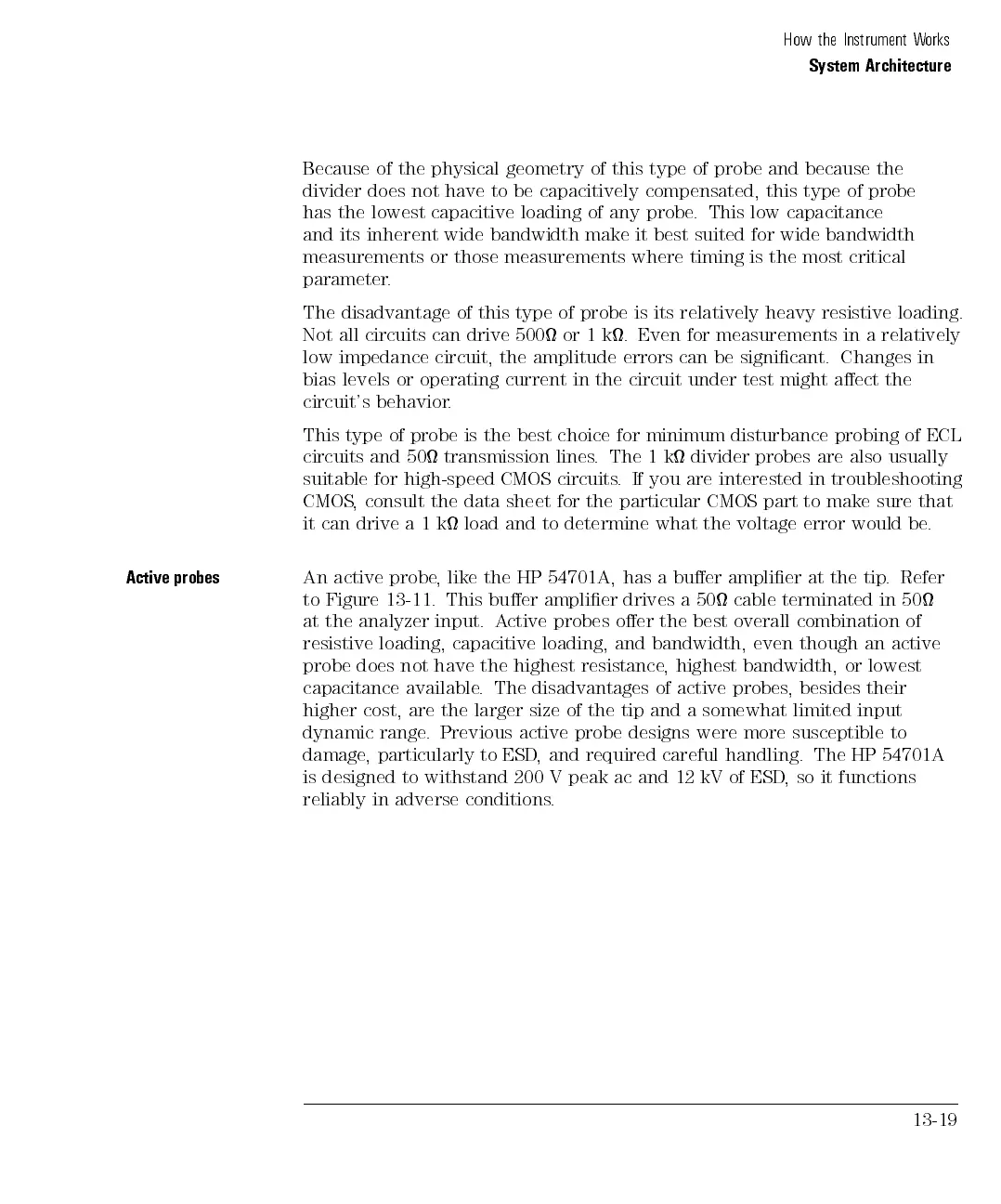How the Instrument Works
System Architecture
Because of the physical geometry of this type of probe and because the
divider does not have to be capacitively compensated, this type of probe
has the lowest capacitive loading of any probe. This low capacitance
and its inherent wide bandwidth make it best suited for wide bandwidth
measurements or those measurements where timing is the most critical
parameter.
The disadvantage of this type of probe is its relatively heavy resistive loading.
Not all circuits can drive 500 or 1 k. Even for measurements in a relatively
low impedance circuit, the amplitude errors can be signicant. Changes in
bias levels or operating current in the circuit under test might aect the
circuit's behavior.
This
type
of
probe
is
the
best
choice
for
minimum
disturbance
probing
of ECL
circuits
and 50
transmission
lines
.
The
1
k
divider
probes
are
also
usually
suitable
for
high-speed
CMOS
circuits
.
If
you
are
interested
in
troubleshooting
CMOS
,
consult
the
data
sheet
for
the
particular
CMOS
part
to
make
sure
that
it
can
drive
a
1
k
load
and
to
determine
what
the
voltage
error
would
be
.
Active
probes
An
active
probe
,
like
the
HP
54701A,
has
a
buer
amplier
at the
tip
.
Refer
to
Figure
13-11
.
This
buer
amplier
drives
a
50
cable
terminated
in
50
at
the
analyzer
input.
A
ctive
probes
oer
the
best
overall
combination
of
resistive
loading,
capacitive
loading,
and
bandwidth,
even
though
an
active
probe
does
not
have
the
highest
resistance
,
highest
bandwidth,
or
lowest
capacitance
available
.
The
disadvantages
of
active
probes
,
besides
their
higher
cost,
are
the
larger
size
of
the
tip
and
a
somewhat
limited
input
dynamic
range
.
Previous active
probe designs
were more
susceptible to
damage
,
particularly
to ESD
, and
required careful
handling. The
HP
54701A
is designed to withstand 200 V peak ac and 12 kV of ESD, so it functions
reliably in adverse conditions.
13-19

